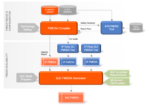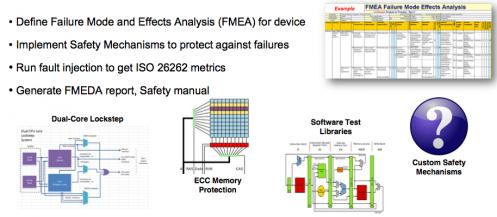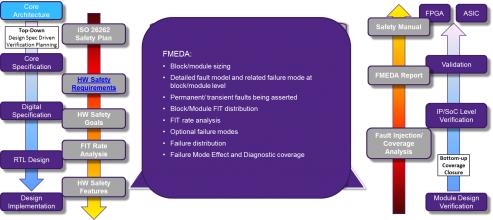In a significant advancement for automotive electronics, Semiconductor intellectual property provider CAST has unveiled the MSC-CTRL Microsecond Channel Controller IP core. This new core empowers ASIC and FPGA designers with a deterministic, microsecond-precise serial interface for connecting to smart power and sensor… Read More
Tag: fmeda
Addressing Reliability and Safety of Power Modules for Electric Vehicles
As electric vehicles (EVs) gain widespread adoption, safety, reliability, and efficiency are becoming increasingly important. A crucial component in ensuring these aspects is the power module (PM), which manages the energy flow between the EV battery and the motor. The design of these power modules must not only meet the high-performance… Read More
Scalability – A Looming Problem in Safety Analysis
Scalability – A Looming Problem in Safety Analysis
The boundless possibilities of automation in cars and other vehicles have captivated designers to the point that electronic content is now a stronger driver of differentiation than any other factor. It accounts for a substantial fraction of material cost in any of these vehicles.… Read More
Scaling Safety Analysis. Reusability for FMEDA
It is common when a new type of analysis is introduced in almost any domain that it works well enough for a while. Until it begins to struggle with growing problem size, prompting refinements to the methodology to allow continued scaling. We see this routinely in analytics for SoC design, so it should not be a big surprise that safety… Read More
Accellera at DVCon U.S. 2022 in the Metaverse!
The premier verification conference and exhibition is coming up and of course Accellera plays an important role. This year DVCON will again be virtual, which is unfortunate, but I must say as a long time attendee this year’s program really stands out. In fact, there is a new addition that is worth mentioning, it’s the… Read More
Accelerating Functional Safety Verification
Verifying a design for functional safety requirements for an IP or SoC per ISO 26262 is a complex process that can’t be encapsulated in one tool. Process complexities depend on whether the Tier1 or OEM is targeting safety-levels ASIL-A , B, C or D, where ASIL-D applies to anything truly safety-critical such as airbag controls or … Read More
Safety in the Interconnect
Safety is a big deal these days, not only in automotive applications, but also in critical infrastructure and industrial applications (the power grid, nuclear reactors and spacecraft, to name just a few compelling examples). We generally understand that functional blocks like CPUs and GPUs have to be safe, but what about the … Read More
Functional Safety in Delhi Traffic
While at DVCon I talked to Apurva Kalia (VP R&D in the System and Verification group at Cadence). He introduced me to the ultimate benchmark test for self-driving – an autonomous 3-wheeler driving in Delhi traffic. If you’ve never visited India, the traffic there is quite an experience. Vehicles of every type pack the roads … Read More
Functional Safety – the Analytics
ISO 26262 is serious stuff, the governing process behind automotive safety. But, as I have observed before, it doesn’t make for light reading. The standard is all about process and V-diagrams, mountains of documentation and accredited experts. I wouldn’t trade a word of it (or my safety) for a more satisfying read, but all that … Read More
Achieving ISO 26262 Certification with ASIL Ready IP
According with McKinsey, “analysts predict revenue growth for advanced driver assistance systems (ADAS) to be up to 29 percent, giving the segment one of the highest growth rates in the automotive and related industries.” Design cycle in automotive segment is much longer than in segments like mobile, PC or consumer. If you expect… Read More











